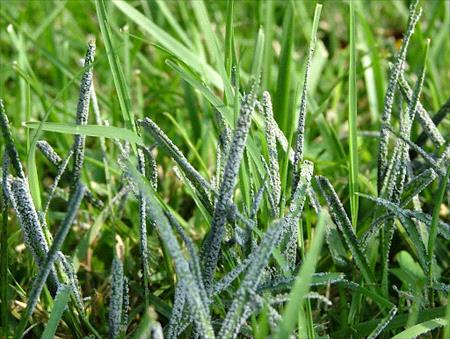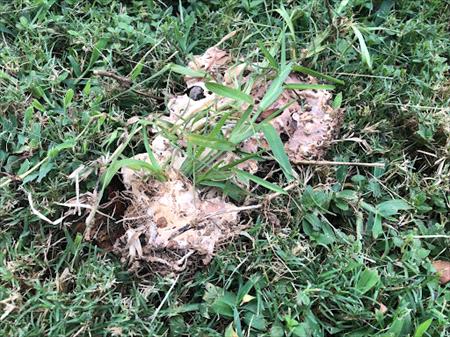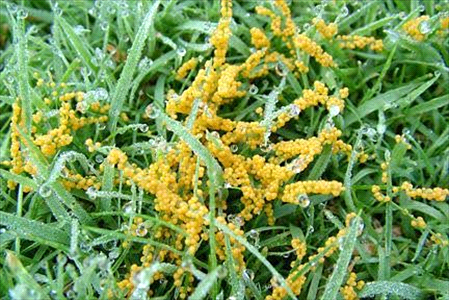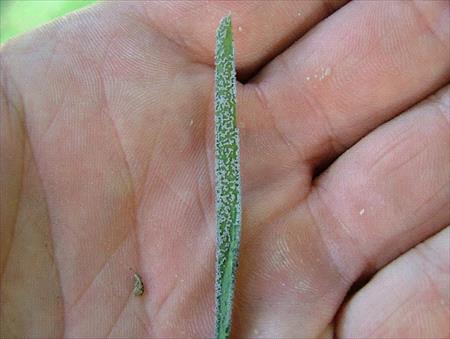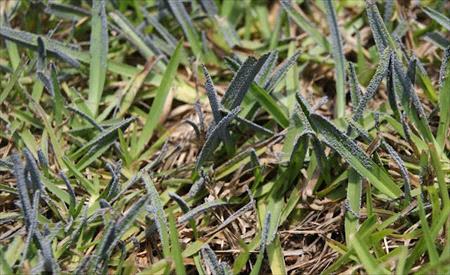Your Cart

Learn Your Lawn: Slime Mould
Request a Quote
Slime Mold is a fungus-like organism that can appear in lawns, particularly during damp or humid conditions, and can spread quickly to cover large areas of the grass. Slime Mold will sometimes appear as a thin layer of slimy, paste-like material that covers the leaf blades. It can appear in different colours and will later dry to form powdery growths on the leaves. Slime Mold is not harmful to humans or animals, and it does not damage lawns directly. However, it can be unsightly and may cause concern for homeowners who are not familiar with the organism. Slime Mold feeds on bacteria and other microorganisms in the soil, so it might indicate an excess of organic matter in the soil, such as dead leaves or other debris. There are various species of Slime Molds throughout North America. Each type differs in appearance and behavior, though they all share the characteristic of being slimy and gelatinous. They are not specific to any certain type of grass and can affect both warm- and cool-season grasses. Some of the more common Slime Mold varieties are: Purple Slime Mold Yellow Slime Mold Dog Vomit Slime Mold Black Slime Mold Slime Mold will typically disappear on its own as conditions become drier and less favourable for growth. When experiencing a light to moderate case of Slime Mold, it’s best just to let nature take its course. Raking out the affected areas is an option, but it’s not always possible or necessary. A thick, healthy, well-maintained lawn is the best line of defense. Here’s how you can adjust your beneficial cultural practices to reduce the spread of Slime Mold: Avoid Watering: Under normal circumstances, you should be watering each area of your lawn for 30-45 minutes, twice per week, in the early morning so the turf is dry by nightfall. However, you should avoid watering when the disease is active. Avoid Mowing: You should avoid mowing when the disease is active. If you do have to mow, make sure your mower blade is razor sharp, so that the blade does not fray the tips of the grass, spreading the disease. Maintain a regular mowing schedule throughout the growing season. In general, you should keep your lawn between 2 ½ and 3 ½ inches high, but during the hottest weeks of summer, you may allow the grass to grow as high as 4 inches. Never remove more than ⅓ of the grass blade at each mowing. Fertilize Regularly: Regular applications of Weed Man’s specially formulated, slow-release granular fertilizer will help provide your lawn with adequate nutrients. These applications are timed specifically to avoid over fertilizing the lawn. Core Aeration: Aerating your lawn can improve soil drainage and help reduce the likelihood of lawn diseases. This will also alleviate soil compaction and allow water and nutrients to penetrate deeper into the soil. Your local Weed Man professional may be able to offer other solutions and recommend the best form of treatment that is available to improve the conditions of your lawn.WHAT IS SLIME MOULD?
HOW CAN I CONTROL SLIME MOULD IN MY LAWN?
 English (USA)
English (USA) Français (CANADA)
Français (CANADA)
